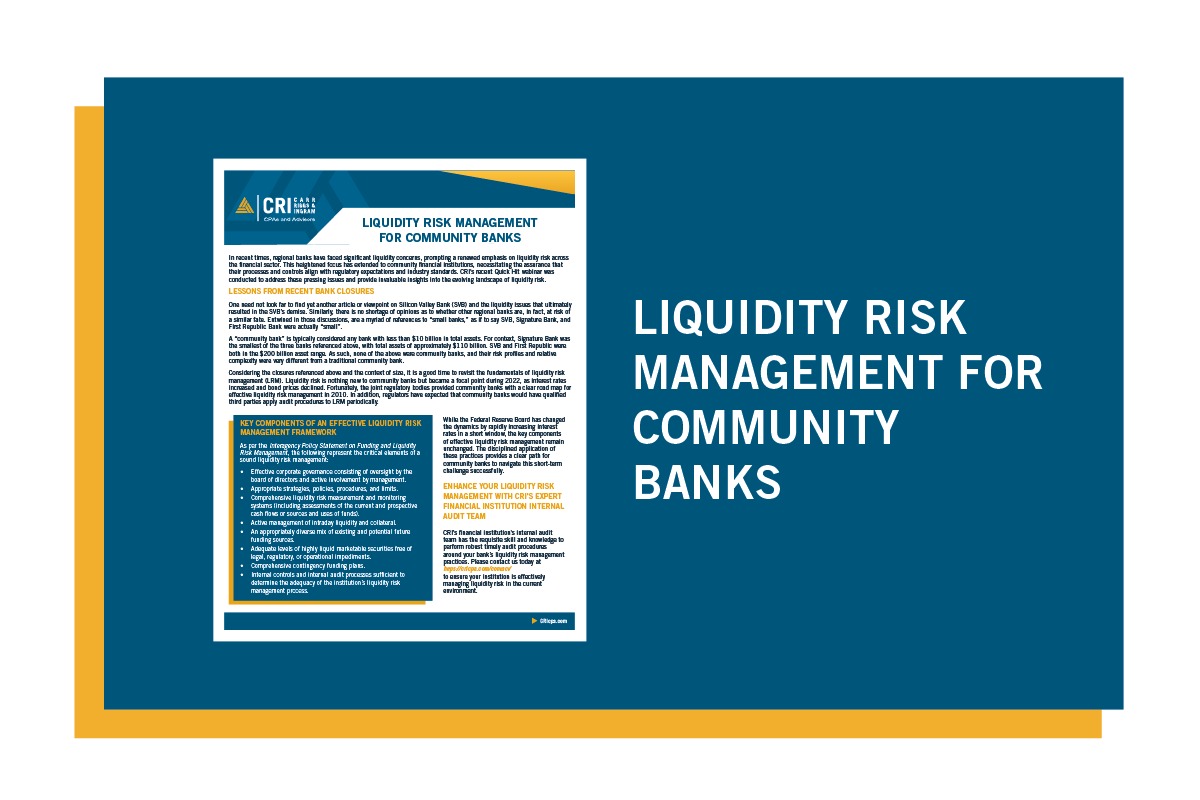

Finance
What Is Banking Compliance
Published: October 13, 2023
Learn about banking compliance in the finance industry. Gain insight on the importance of adhering to regulations and maintaining financial integrity.
(Many of the links in this article redirect to a specific reviewed product. Your purchase of these products through affiliate links helps to generate commission for LiveWell, at no extra cost. Learn more)
Table of Contents
Introduction
In the dynamic and ever-changing landscape of finance, banking compliance holds a crucial position. It serves as the framework that ensures financial institutions, such as banks, credit unions, and other lending organizations, adhere to a set of rules, regulations, and standards. These rules are put in place to promote transparency, accountability, and ethical behavior within the financial industry.
Banking compliance encompasses a wide range of regulations and guidelines, covering areas such as anti-money laundering (AML), consumer protection, data protection, risk management, and more. The objective of banking compliance is to safeguard the stability and integrity of the financial system while protecting the rights and interests of customers.
With the rise in financial fraud, money laundering, and other illicit activities, it has become imperative for financial institutions to prioritize compliance efforts. The consequences of non-compliance can be severe, ranging from hefty fines and legal penalties to reputational damage and loss of customer trust. Therefore, banks must establish robust compliance systems to mitigate risks and ensure adherence to regulatory requirements.
Definition of Banking Compliance
Banking compliance refers to the adherence of financial institutions to a set of laws, regulations, and standards imposed by regulatory bodies. It encompasses the policies, procedures, and practices that banks must implement to ensure they operate within the boundaries of legal and ethical frameworks.
Compliance in the banking industry involves various areas, including but not limited to anti-money laundering (AML) regulations, know your customer (KYC) requirements, consumer protection laws, fair lending practices, data privacy regulations, and risk management protocols. It is the responsibility of the bank’s compliance department to develop and enforce these measures to prevent financial crimes, protect customers, and maintain the overall stability of the banking system.
Financial regulations and compliance requirements differ from country to country, and banks are required to stay updated with the latest changes and developments in the regulatory landscape. Failure to comply with these regulations can result in severe consequences such as significant financial penalties, loss of license, or even criminal charges for individuals involved in non-compliant practices.
Moreover, banking compliance also extends beyond regulatory obligations. It encompasses ethical and socially responsible behaviors that banks are expected to adhere to, such as promoting financial literacy, providing transparent and fair financial products, and fostering a culture of honesty and integrity within the organization.
In summary, banking compliance serves as a safeguard to protect the interests of both financial institutions and the customers they serve. By ensuring adherence to legal and ethical standards, it builds trust, stability, and a solid foundation for the financial industry to thrive.
Importance of Banking Compliance
Banking compliance plays a vital role in the financial industry by promoting transparency, accountability, and trust. Let’s explore the key reasons why compliance is of utmost importance for banks and other financial institutions.
- Legal and Regulatory Requirements: Banks are subject to a complex web of laws and regulations imposed by government bodies and regulatory authorities. Compliance ensures that banks operate within the parameters of these regulations, minimizing the risk of legal penalties and reputational damage.
- Preventing Financial Crimes: Compliance measures, such as anti-money laundering (AML) and know your customer (KYC) requirements, are crucial in detecting and preventing financial crimes, including money laundering, fraud, and terrorist financing. By implementing robust compliance systems, banks can protect themselves and their customers from illicit activities.
- Protecting Customers: Compliance regulations, such as consumer protection laws, ensure that banks treat their customers fairly and transparently. Compliance safeguards customer interests, prevents predatory practices, and fosters trust in banking services.
- Maintaining Financial Stability: Compliance measures, including risk management protocols, help banks identify and mitigate potential risks. By adhering to these measures, banks can safeguard the stability of the financial system, preventing economic crises and protecting the interests of depositors and investors.
- Preserving Reputation: Compliance failures can lead to severe reputational damage for banks. By maintaining a strong compliance culture and implementing effective compliance strategies, banks can protect their reputation and build trust with customers and stakeholders.
Compliance should not be viewed as a burdensome obligation; rather, it should be seen as an integral part of a bank’s operations. A well-implemented compliance framework ensures that banks operate ethically, mitigate risks, and contribute to the overall stability and integrity of the financial system.
Role of Regulatory Bodies in Banking Compliance
Regulatory bodies play a vital role in establishing and enforcing banking compliance standards. These organizations are responsible for creating and implementing regulations that govern the operations of banks and other financial institutions. Let’s explore the key roles of regulatory bodies in banking compliance:
- Policy Development: Regulatory bodies develop and refine the regulations and guidelines that financial institutions must comply with. These policies are designed to ensure the stability and integrity of the banking system, protect customers, and mitigate risks.
- Licensing and Supervision: Regulatory bodies issue licenses to banks, granting them permission to operate in the financial market. They also supervise and monitor banks to ensure compliance with regulatory requirements. Regular inspections, audits, and reporting obligations help regulatory bodies assess a bank’s compliance status.
- Enforcement: Regulatory bodies have the authority to enforce compliance standards and take action against non-compliant institutions. This may involve imposing fines, restricting banking activities, or even revoking a bank’s license in extreme cases of non-compliance.
- Education and Guidance: Regulatory bodies provide guidance and support to financial institutions to help them understand and implement compliance measures effectively. They may offer training programs, publish industry best practices, and issue clarifications on regulatory requirements.
- Monitoring and Reporting: Regulatory bodies closely monitor the financial industry to identify emerging risks and trends. They collect and analyze data from banks and other financial institutions to assess the overall health of the banking system and identify potential areas of concern.
- Collaboration and Cooperation: Regulatory bodies often collaborate with other regulatory authorities, both domestically and internationally, to ensure consistent and coordinated efforts in banking compliance. Sharing information and best practices helps strengthen the effectiveness of compliance measures.
The role of regulatory bodies is crucial in maintaining a level playing field for financial institutions, protecting the interests of customers, and safeguarding the overall stability of the banking system. Their oversight and enforcement activities ensure that banks operate within legal and ethical boundaries, promoting trust and confidence in the financial industry.
Key Components of Banking Compliance
Banking compliance involves several key components that collectively form the foundation of a robust compliance framework. Understanding these components is essential for financial institutions to ensure compliance with regulatory requirements. Let’s explore the key components of banking compliance:
- Policies and Procedures: In order to ensure compliance, banks must establish clear policies and procedures that outline the expectations and guidelines for employees to follow. These policies cover areas such as anti-money laundering, customer due diligence, risk management, data protection, and more.
- Risk Assessment: Banks must conduct regular risk assessments to identify potential compliance risks and vulnerabilities. This involves evaluating the institution’s exposure to regulatory, operational, and reputational risks, and developing strategies to mitigate those risks.
- Training and Education: Adequate training and education are crucial to ensure that employees understand their compliance responsibilities and are equipped with the knowledge and skills to fulfill their roles effectively. Training programs should cover relevant compliance regulations, policies, and best practices.
- Internal Controls: Banks need to implement robust internal control mechanisms to monitor and assess compliance efforts within the organization. This includes conducting regular audits, establishing segregation of duties, and implementing checks and balances to detect and prevent non-compliant activities.
- Monitoring and Reporting: Banks must establish mechanisms to monitor and report compliance-related activities. This involves maintaining records, conducting regular internal assessments, and submitting required reports to regulatory bodies in a timely manner.
- Compliance Officer: Financial institutions should have a designated compliance officer responsible for overseeing and managing the compliance function. The compliance officer is responsible for ensuring adherence to regulations, implementing compliance programs, and providing guidance to employees.
- Third-Party Due Diligence: Banks often engage with third-party service providers, vendors, and business partners. Performing due diligence on these entities is crucial to ensure that they meet compliance standards and do not pose any regulatory or reputational risks to the bank.
These key components form the building blocks of an effective banking compliance framework. By establishing and maintaining these components, financial institutions can enhance their compliance efforts and mitigate the risk of non-compliance.
Compliance Framework in Banking Industry
The compliance framework in the banking industry refers to the overall structure and processes put in place by financial institutions to ensure compliance with regulatory requirements. It provides a systematic approach to managing and maintaining compliance within the organization. Let’s explore the key elements of a compliance framework in the banking industry:
- Governance and Leadership: A strong compliance framework starts with a commitment from senior management and the board of directors to prioritize compliance. Effective governance ensures that compliance policies and procedures are embedded in the organization’s culture and that compliance-related decisions are made at the highest level.
- Risk Assessment: Financial institutions need to conduct regular risk assessments to identify potential compliance risks and vulnerabilities. This involves evaluating the institution’s exposure to regulatory, operational, and reputational risks. Risk assessments help determine the priorities and allocate resources effectively.
- Policies and Procedures: Clearly defined policies and procedures are essential to guide employees on the expectations and requirements for compliance. Policies should cover various areas such as anti-money laundering, data protection, risk management, and consumer protection. These policies need to be regularly reviewed and updated to reflect changes in regulations.
- Training and Communication: Adequate training and communication are vital to ensure that employees understand their compliance responsibilities and are kept informed of any regulatory changes. Training programs should cover compliance regulations, internal policies, and best practices. Regular communication channels should be established to keep employees updated on compliance matters.
- Monitoring and Testing: Banks need to implement monitoring and testing programs to assess the effectiveness of their compliance efforts. This involves conducting regular internal audits, reviews, and testing of internal controls. Monitoring activities help identify and address any compliance gaps or issues.
- Reporting and Recordkeeping: Accurate and timely reporting is a fundamental component of a compliance framework. Banks need to maintain proper records and submit required reports to regulatory bodies. Robust recordkeeping ensures transparency, facilitates audits, and provides evidence of compliance efforts.
- Response and Remediation: Inevitably, compliance breaches may occur despite the best efforts. Financial institutions need to have procedures in place to promptly detect and respond to compliance violations. Swift remediation measures, including conducting investigations, implementing corrective actions, and addressing any issues, help prevent further non-compliance.
A well-designed compliance framework ensures that financial institutions are proactive in managing compliance risks, meeting regulatory requirements, and protecting the interests and trust of their customers. It demonstrates the commitment to ethical practices and helps build a strong reputation in the banking industry.
Challenges and Issues in Banking Compliance
Banking compliance is a complex and ever-evolving field that presents several challenges and issues for financial institutions. Let’s explore some of the common challenges in banking compliance:
- Complex Regulatory Landscape: The regulatory landscape is multifaceted and continuously evolving. Banks need to navigate through a myriad of regulations and keep up with regulatory changes. Staying updated and ensuring compliance with various regulations can be challenging and time-consuming.
- Data Privacy and Cybersecurity: Financial institutions handle vast amounts of sensitive customer data, making them prime targets for cyberattacks. Ensuring data privacy and implementing robust cybersecurity measures are critical for banks to protect customer information and comply with data protection regulations.
- Fragmented Compliance Systems: In many cases, banks deal with multiple systems and departments that handle different aspects of compliance. This can lead to a lack of integration and coordination, making it difficult to ensure a holistic and streamlined approach to compliance.
- Cost of Compliance: Implementing and maintaining a comprehensive compliance program requires significant financial resources. Compliance costs include investments in technology, employee training, third-party audits, and ongoing monitoring. Balancing the cost of compliance with profitability can be a challenge for financial institutions, especially smaller organizations.
- Changing Customer Expectations: Customers today have higher expectations for transparency, fairness, and ethical practices from financial institutions. Meeting these expectations while ensuring compliance can be a challenge, requiring banks to continuously adapt and improve their compliance processes.
- Globalization and Cross-Border Compliance: As banks expand their operations globally, they face the challenge of complying with various regulations across different jurisdictions. Each country may have its own set of compliance requirements, which adds complexity and increases the risk of non-compliance.
- Internal Culture and Awareness: Achieving a strong compliance culture within the organization can be challenging. Banks need to create awareness and promote a culture of compliance at all levels of the organization. This involves training employees, fostering accountability, and encouraging a proactive approach to compliance.
While these challenges exist, financial institutions must prioritize banking compliance to protect their reputation, mitigate risks, and build trust with customers. Engaging with compliance experts, leveraging technology solutions, and continuously monitoring and adapting to regulatory changes can help banks navigate these challenges successfully.
Benefits of Effective Banking Compliance
Effective banking compliance provides numerous benefits to financial institutions, their customers, and the overall stability of the financial system. Let’s explore the key advantages of maintaining robust compliance practices:
- Legal and Regulatory Compliance: By adhering to regulatory requirements, banks can avoid legal penalties, fines, and reputational damage. Compliance helps financial institutions stay on the right side of the law and ensures adherence to ethical standards.
- Customer Trust and Confidence: Effective compliance measures foster trust and confidence among customers. When customers perceive a bank as trustworthy and compliant, they are more likely to establish long-term relationships and entrust their financial needs to the institution.
- Enhanced Reputation: Maintaining a strong compliance culture and reputation is crucial for banks. A positive reputation attracts customers, investors, and partners, contributing to the bank’s growth and sustainability in the competitive financial industry.
- Prevention of Financial Crimes: Compliance measures, such as anti-money laundering (AML) and know your customer (KYC) requirements, help banks detect and prevent financial crimes. By implementing effective compliance programs, institutions can mitigate the risk of money laundering, fraud, and terrorist financing.
- Risk Mitigation: Banks face numerous risks, including credit risk, operational risk, and reputational risk. Effective compliance programs help identify and mitigate these risks, reducing the likelihood of financial losses and preserving the institution’s stability.
- Improved Operational Efficiency: Compliance measures often require streamlining internal processes and standardizing procedures. This can lead to increased operational efficiency and cost savings. Effective compliance practices help identify areas for process improvement and optimize resource allocation.
- Access to Financial Markets: Compliance with regulatory requirements is essential for banks to access financial markets and products. Compliant institutions are more likely to obtain necessary licenses and certifications, enabling them to offer a wider range of financial services to their customers.
- Competitive Advantage: Strong compliance practices can provide a competitive edge for banks. Compliance-conscious customers and investors are more likely to choose institutions that prioritize ethical behavior, transparency, and regulatory compliance.
Ultimately, effective banking compliance is not only a legal and regulatory obligation but also a strategic advantage. It builds trust, attracts customers, mitigates risks, and contributes to the long-term success of financial institutions in an ever-changing and complex financial landscape.
Conclusion
Banking compliance is a critical aspect of the financial industry, ensuring that financial institutions operate within legal and ethical boundaries. It involves adhering to a complex web of regulations, policies, and procedures to promote transparency, protect customers, and maintain the stability of the financial system.
Throughout this article, we have explored the various components of banking compliance, including its definition, importance, and key challenges. We have also highlighted the role of regulatory bodies in establishing and enforcing compliance standards.
Effective banking compliance offers numerous benefits to financial institutions. It helps them avoid legal penalties, build customer trust, and enhance their reputation. Compliance also plays a crucial role in preventing financial crimes, mitigating risks, and improving operational efficiency.
However, maintaining compliance can be challenging due to the ever-changing regulatory landscape, the rise of cyber threats, and the cost of implementing comprehensive compliance programs. Banks need to continuously adapt, stay informed, and invest in compliance resources to effectively navigate these challenges.
In conclusion, the importance of banking compliance cannot be overstated. It is the foundation upon which trust, integrity, and stability are built within the financial industry. By prioritizing compliance, financial institutions can protect themselves, their customers, and the overall health of the banking system, ultimately leading to a more transparent, secure, and thriving financial sector.














